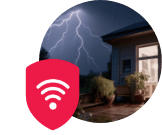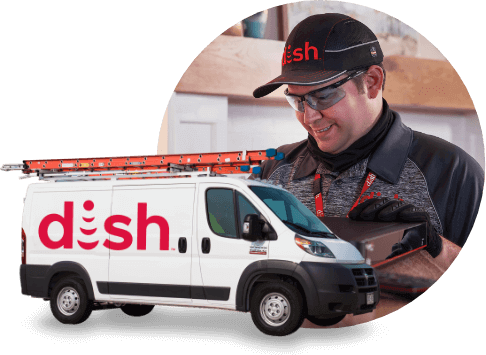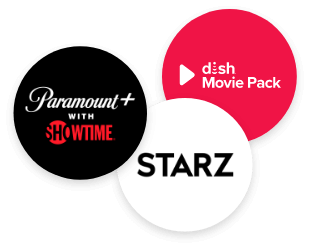How to Get Low-Income Internet Through Breezeline
Table of Contents
The end of the Affordable Connectivity Program (ACP) in June 2024 [1] left millions of low-income households scrambling to find affordable internet options. While the federal program provided $30 monthly discounts to eligible families, its closure marked a significant shift in how internet providers approach affordable connectivity. Fortunately, Breezeline attempts to fill this gap with dedicated programs specifically designed for income-qualified customers.
Breezeline low-income internet programs offer a lifeline for families who previously relied on ACP benefits. The provider, serving 13 states across the East Coast and Midwest, recognized that internet access isn’t a luxury, and that it’s essential for education, healthcare, employment, and staying connected with family and services.
[search_block]
What is Breezeline’s Internet Assist Program?
Breezeline’s flagship affordable internet solution is the Internet Assist Program, designed specifically for low-income households [2]. This program provides download speeds up to 50 Mbps for just $9.99 per month, which are fast enough for essential online activities like paying bills, checking email, video calling, and streaming on one device.
The program offers a shift from traditional cable internet pricing models. While most internet providers charge $50-80 monthly for similar speeds, Breezeline’s commitment to digital equity means eligible families can access reliable connectivity for less than the cost of a movie ticket.
Features of the Internet Assist Program include:
- No installation fees or activation charges
- No annual contracts required
- Free modem included with service
- Wi-Fi router rental available (additional cost) or bring your own
How to Qualify for Breezeline Low-Income Internet
Qualifying for Breezeline affordable internet programs requires meeting specific income or assistance program criteria. The qualification process is streamlined to help eligible families get connected quickly without bureaucratic hurdles.
You’ll generally qualify if you participate in any one of these programs [3]:
- National School Lunch Program (NSLP): The most common qualifier for families with school-age children
- Medicaid: Covers healthcare assistance recipients
- Supplemental Nutrition Assistance Program (SNAP): Food assistance program participants
- Housing Assistance: Including Section 8 and public housing residents
- Low Income Home Energy Assistance Program (LIHEAP): Energy bill assistance recipients
- Special Supplemental Nutrition Program for Women, Infants, and Children (WIC): Nutritional support program participants
- Previous ACP participation: Former Affordable Connectivity Program beneficiaries automatically qualify
To qualify, you also must not have a past due balance with Breezeline or had any Breezeline service disconnected for non-payment in the past six months.
The application process is entirely online through Breezeline’s website. You’ll need to provide personal information and documentation proving eligibility for one of the qualifying programs. Most applications are processed within 72 hours.

Comparing Breezeline Internet Plans and Prices
When evaluating cheap Breezeline internet options, it’s important to understand how the low-income programs compare to standard residential plans. This comparison helps families make informed decisions about their connectivity needs and budget constraints.
Internet Assist vs. Standard Plans:
Internet Assist ($9.99/month) provides 50 Mbps speeds with no equipment rental fees for the modem. Standard Breezeline plans start around $19.99 monthly but include additional fees that can push total costs to $50+ per month after equipment rental, taxes, and fees.
Standard Breezeline customers may face price jumps after 12-24 month promotional periods, while Internet Assist pricing remains stable for qualified households. This predictable pricing helps low-income families budget for internet service without worrying about hidden or surprise price increases.
What Happened After the ACP Program Ended?
The Affordable Connectivity Program’s closure in June 2024 created uncertainty for over 23 million participating households nationwide [4]. The program had provided $30 monthly discounts (or $75 for Tribal lands) since 2021, making it one of the largest broadband affordability initiatives in U.S. history.
For former ACP participants, Breezeline automatically qualified customers for Internet Assist programs, providing a transition from federal subsidies to provider-specific affordability programs. This proactive approach helped prevent service disruptions that affected many households when other internet providers didn’t offer comparable alternatives.
The transition highlighted the ongoing challenge of digital equity in America. While federal programs like ACP provided temporary relief, sustainable affordability requires long-term commitments from internet providers to serve low-income communities.

Alternative Low-Income Internet Options
While Breezeline serves 13 states, families outside their coverage area need alternatives for affordable connectivity. The best internet providers for low-income households vary by location, but several national and regional options exist.
Major Provider Programs:
Xfinity offers Internet Essentials starting at $14.95 monthly for qualifying households, with similar eligibility requirements to Breezeline’s programs [5]. Spectrum provides Internet Assist at $25 monthly for speeds up to 50 Mbps [6]. Cox offers Connect2Compete for $9.95 monthly in select markets [7].
Federal and State Resources:
The Lifeline program provides $9.25 monthly discounts for phone or internet service through participating providers [8]. Many states also offer broadband assistance programs, particularly following federal infrastructure investments.
Local libraries remain important resources for families seeking internet access. Most public libraries offer free Wi-Fi, computer access, and even digital literacy training.
How to Find the Best Internet in Your Area
Selecting the best internet in your area requires comparing available providers, speeds, and pricing for your specific address. Internet availability varies significantly by location, even within the same city or zip code.
Start by using online comparison tools to identify which internet providers serve your address. Enter your zip code on provider websites or comparison platforms to see available plans and current pricing. Pay attention to promotional rates versus regular pricing, as many providers offer temporary discounts that increase after 12-24 months.
When comparing options, consider these factors beyond just monthly price:
- Speed requirements: Determine your household’s internet usage patterns. Basic web browsing and email need minimal speeds, while video streaming, online gaming, or remote work require higher bandwidth.
- Equipment costs: Factor in modem and router rental fees, which can add $10-15 monthly to your bill. Purchasing your own equipment often saves money long-term.
- Contract terms: Some providers require annual contracts with early termination fees, while others offer month-to-month flexibility.
- Data caps: Verify whether plans include unlimited data or impose monthly usage limits that could result in overage charges.

Making Internet Comparison and Selection Decisions
Effective internet comparison involves evaluating multiple providers and plans against your household’s specific needs and budget constraints. This process becomes particularly important for low-income families where every dollar matters. Here are some tips to help guide you:
- Create a comparison chart listing available providers, their low-income program offerings, speeds, monthly costs, and additional fees. Include setup costs, equipment requirements, and any promotional pricing that expires after initial periods.
- Compare internet plans by calculating total cost of ownership over 12-24 months rather than focusing solely on advertised monthly rates. Add equipment rental fees, installation charges, taxes, and any promotional price increases to determine true costs.
- Consider calling providers directly to discuss available options, as phone representatives sometimes have access to additional discounts or programs not advertised online. Many providers offer compassionate rate programs for customers experiencing financial hardship.
- Internet prices for low-income programs typically range from $10-30 monthly nationwide. While these programs offer significant savings compared to standard residential plans, availability and eligibility requirements vary considerably between providers and regions.
- When possible, avoid long-term contracts that lock you into specific rates or providers. Month-to-month service provides flexibility to change providers if better options become available or if your financial situation changes.
The digital divide continues to a big challenge for low-income households, but programs like Breezeline’s Internet Assist show how internet providers can prioritize digital equity alongside business objectives. By understanding available options and qualification requirements, eligible families can access essential internet connectivity without breaking their budgets.
Frequently Asked Questions
Can I keep my Breezeline Internet Assist plan if my income changes?
You’ll need to recertify your eligibility annually for Breezeline’s low-income programs. If your income increases above program thresholds or you no longer qualify for assistance programs, you may need to transition to standard residential plans. However, you can reapply if your circumstances change and you become eligible again.
What internet speed do I actually need for my household?
For basic activities like email, web browsing, and bill paying, 25 Mbps is sufficient. Streaming video on one device needs 5-10 Mbps, while multiple users or devices require higher speeds. Breezeline’s 50 Mbps Internet Assist plan should handle most single-household needs.
Do I need to buy my own router for Breezeline Internet Assist?
The Internet Assist program includes a free modem, but you’ll need a Wi-Fi router for wireless connectivity. You can rent one from Breezeline for an additional monthly fee or purchase your own router, which often saves money over time. Any standard cable modem-compatible router should work with the service.
What happens if I can’t afford internet service even with these programs?
If $9.99 monthly still strains your budget, check with local libraries for free internet access and computer use. Additionally, some community organizations offer digital equity programs that can provide temporary assistance or reduced-cost devices.
Sources
[1] FCC. “Affordable Connectivity Program."
[2] Breezeline. “Affordable Connectivity Program."
[3] Breezeline. “Internet Assist Program Qualifications."
[4] FCC. “Affordable Connectivity Program Consumer FAQ."
[5] Xfinity. “Internet Essentials."
[6] Spectrum. “Internet Assist."
[8] USAC Lifeline Support. “Homepage."












 Call
Call 

 Access Your Account
Access Your Account